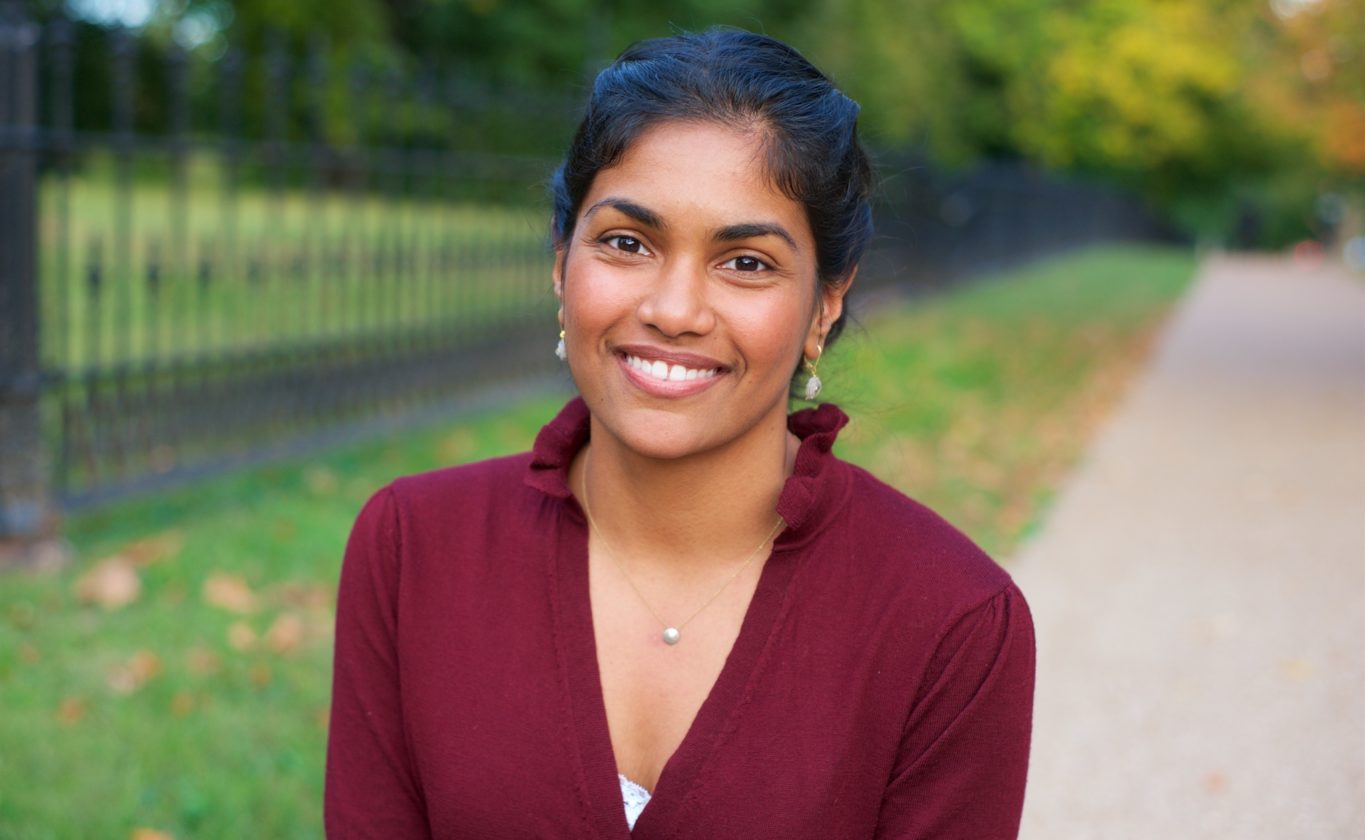I, quite honestly, was kind of terrified. I knew my comfort zone was solidly in the area of numbers, and analytics, and modeling in statistics and data sets. Secondary data means you’re not actually in front of people, gathering information from their mouths, from their lived experiences, and then listening to it being relayed to you in person. I figured that the majority of the Ferguson Commission’s work was not going to be data and numbers and behind the scenes, but had to be in person experiencing and seeing the reality of what so many in our region live with on a day-to-day basis.
It was daunting, for sure. But, I’m a fan of doing what scares you, at least a little bit. It’s generally good for you, and you come out of it a little bit stronger, and I thought the work was important. I was lucky in that I was literally invited to the work by Monique Gilliam, who was the assistant director and Bethany Johnson-Javois’ right-hand lady on the Commission. So if someone I trusted, like Monique, thought that I would be valuable in it, then why not give it a shot? Yeah, it was out of the blue, but it definitely left an imprint on the trajectory on things in my life.
For every White student that’s suspended out of school per 100 White students, about 15 more Black students are suspended out of school.
I’m staying in St. Louis, I’m in school, and the topic that it looks like I’m going to be studying for my dissertation, and for the foreseeable future beyond that, came out of my work for the Commission in the area of educational equity — one of the Ferguson Commission’s four workgroups – and it has to do with the discipline gap. The discipline gap refers to the racial disparity in the rate at which students are removed from the classroom. The rate at which Black students compared to White students are suspended from school. That gap in Missouri is larger than it is in any other state, at least at the elementary school level. And it’s in fourth or fifth place for the secondary high school level.
So, for every White student that’s suspended out of school per 100 White students, about 15 more Black students are suspended out of school. It’s a huge gap. And as a public health practitioner, you know that kids that are suspended are put on a track to end up being more likely to end up in a juvenile justice system and incarcerated. We know that. The literature shows that. But, I wonder if there weren’t other behavioral health and even physical health outcomes that resulted from being told, usually again and again, “You’re a troublemaker, and the best thing we can do with you is to kick you out and keep you out of the way of other students.”
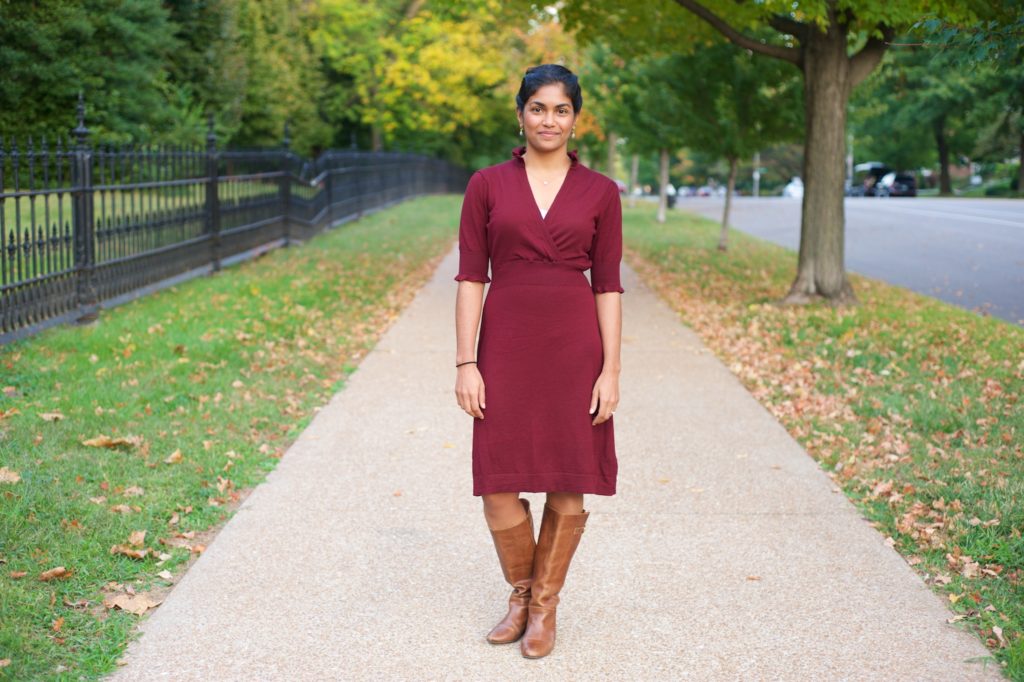
Karishma Furtado, photos by Lindy Drew
It seemed like an obvious blank in the literature, but it also resonated on a more personal level as someone who has experienced exactly the opposite from her educational experience. Starting from my earliest memories of school, I was told by teachers, “You’re great. You’re smart. You’re gonna do great things. We have high expectations from you, we’re certain you can meet those expectations, and we’re going to provide you with the resources, the nurturing, and the love that you need to do so.” So to think that that’s not the experience that Black students encounter from their education was infuriating and heartbreaking. I remember reading a story about an elementary school-aged kid whose principal would go out of her way to sit down with her students one-on-one to tell them they are valuable; that she is so happy that they are a part of her school. The kid said, “She tells me, ‘I’m glad you’re around,’” which is such a simple message for kids to get. And when they don’t get it, there is a ripple effect that – we as adults propping up this education system, and the teachers who are more active players, and administrators who are developing policies – aren’t aware of when we say, “Here is a disciplinary option. Use it as you see fit.”
Community based participatory research means a pretty simple thing – this idea of radical listening, as we call it on the Commission.
When I applied to my Ph.D. program in the winter of 2014, my ideas were far less developed. I promptly changed my mind once I got into this work and started experiencing things first hand. Combining research, quantitative data, and technical information with rich storytelling, personal experiences, and the qualitative aspect is so much more powerful than getting one of these things alone. Oftentimes, at least in academia, we can speak to what we know we should be doing, but there is a big gap between what we say and what we do. It makes me think of this concept of community based participatory research, which is a mouthful of words that means a pretty simple thing – this idea of radical listening, as we call it on the Commission. Or, just making sure that the stakeholders that you are saying you work in the name of are meaningfully involved and enfranchised in your work.
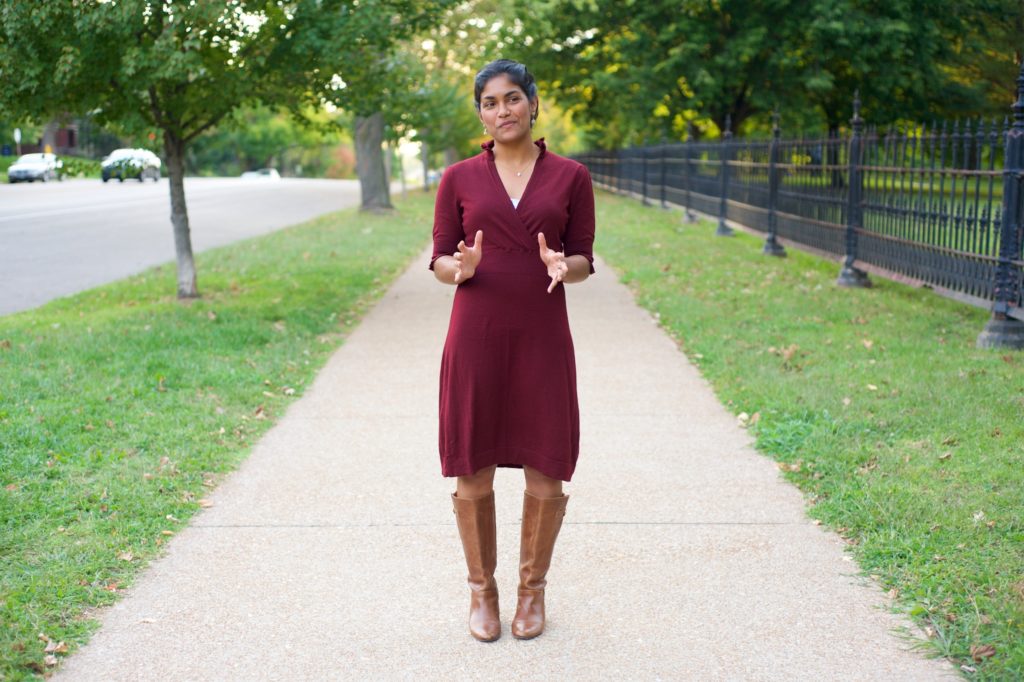
Day one was definitely fuzzy. I walked in and was like, “What?” I mean, I understood the broad mandate issued to us by the governor and knew we had a report to write. But, the Type A student in me was like, “Have you started on the report? It’s due in about four months, and we should be writing this thing right now, right?” People were so far from that that we couldn’t even begin to write because we didn’t have calls to action. I had only the broadest sense of knowing what was going to happen four months down the line for stuff we were supposed to produce, and beyond that I had no idea where it would go. I was hopeful and knew early on that this was an inspired and an extremely capable group of leaders that we were working for. And I was optimistic that it wouldn’t just sunset at the report’s launch and that would be that. I think Nicole Hudson and Bethany Johnson-Javois, by sheer force of will, probably would have found a way of keeping it going, and there were many more stakeholders who wanted to keep it going, too, including commissioners, community organizations, and other individuals. There was a lot of momentum and great people stewarding that momentum.
Part of my deep relationship with the report is because I helped develop those calls to action.
When the Commission was up and running, I helped manage the workgroups. That meant sourcing research for them, presenting research to them, identifying experts, getting those experts to talk to them. Basically, helping to lasso this universe of material that was going to inform the calls to action. Then, for some workgroups, it meant drafting the calls to action and putting pencil to paper even when the workgroups were still debating what the wording would be. We made something to react to and then they could work on it from there. So, part of my deep relationship with the report is because I helped develop those calls to action. I was the person that built and managed the database of calls to action as they went through multiple iterations and through all the phases of the Commission’s work from being drafted in the working groups to being proposed to the Commission, to being sent back to the working group by the Commission, to going back to the Commission and being finalized. All the various pin-ball steps along the way to the final goal of being ready to go into the report. I got a front-row seat just to bring the calls to action into the universe.
When it was time to write the report, we conceptualized it as this iceberg with most of it being below the level of the water. The top layer was the MSNBC, approachable layer. Short and not too into the weeds, but a nice, high level to still get the big picture and take away that this is a report about Racial Equity in St. Louis and various issues of racial disparity in the region. The next level down is what we call the NPR layer where you get a little bit more meat and detail. The level below that was the C-SPAN layer, where all the details and the wonkiness lived. And at that level, organizing and grouping all the calls to action beyond the four broad buckets of the workgroups, were my responsibility as we moved into report writing.
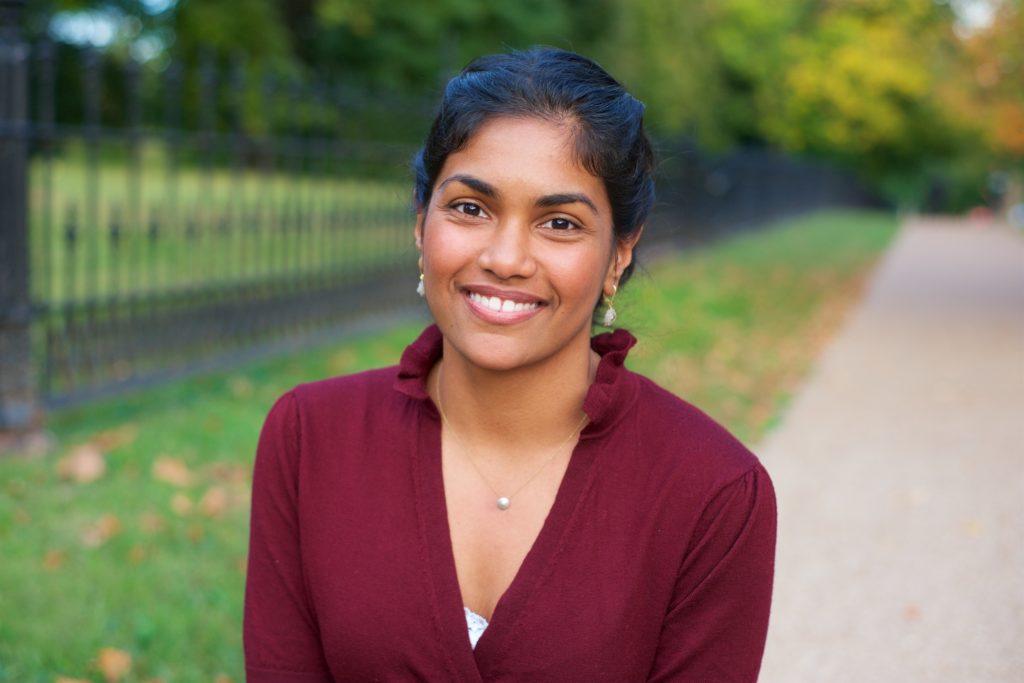
The fact that we applied a Racial Equity lens to just about every call to action that we could, so that almost all the calls to action were supported by data shows, “This is the racial disparity that makes this call to action absolutely necessary. You can point to the numbers here.” The report melds that hard, grounding in the statistics with the beauty of compelling storytelling, and being a small part of putting that together is probably what I’m proudest of. Academia teaches us to live in the abstract world of numbers and never really bring it into the world of actual people experiencing actual outcomes on a daily basis. So to produce a product that does both of those things at the same time is something worth being really proud of.
The report melds that hard, grounding in the statistics with the beauty of compelling storytelling, and being a small part of putting that together is probably what I’m proudest of.
Moving forward, we need to figure out how we operationalize radical collaboration. We all understand that Racial Equity is in some ways this emergent property. It doesn’t live in just one system or place. It can only arise out of all systems behaving in a racially equitable way, which means that those of us working in education can’t be isolated from those working in housing and can’t be isolated from those working in banking. And it’s hard to do. We can all say it, and write it down, and be all about it on paper, but we still haven’t figured out how to actually do it in our work.
There are a lot of structures that are in place – funding being a big one of them – that make it difficult to collaborate. Funding structures are usually set up for an individual effort in a specific area. Gates Foundation funds X, Y, and Z. MacArthur Foundation funds A, B, and C. If you wanted to do something that spans across X, Y, Z, A, B, and C, who do you go to fund that? We haven’t figured out how to do it yet, and it became clear when we just submitted a MacArthur grant. About 70 plus partner organizations came forward and said, “We want to be part of this.” And they did, but it was not a clean, efficient, streamlined process. What happened after that was chaos. And it sort of has to be, because this is another instance of building a plane as we fly it. It’s a novel way of doing this work, but we’re figuring out how to do it as we go.
“Are there any organizations that you come across that are doing something even in the realm of what Forward Through Ferguson is attempting?”
The work of Social Innovation STL has its roots in radical collaborative with strong commitments to monitoring and evaluating to inform their plans and trajectory – how to invest resources and how to reallocate resources, which is responsive, and seeing the big picture approach that is necessary. They’re helping Forward Through Ferguson, and a lot of others as well, because they work in that interstitial space of helping other organizations in the social domain do those things better. A lot of individual organizations that are more siloed into certain areas are ready to build those muscles as they’ve stepped forward to say, “Help us to do this.” Now it’s a matter of helping them to do the work. Building the muscles is not going to be easy. Like when you go to the gym, you know it’s going to be sweaty and ugly in some ways, but in other ways, it’s okay.
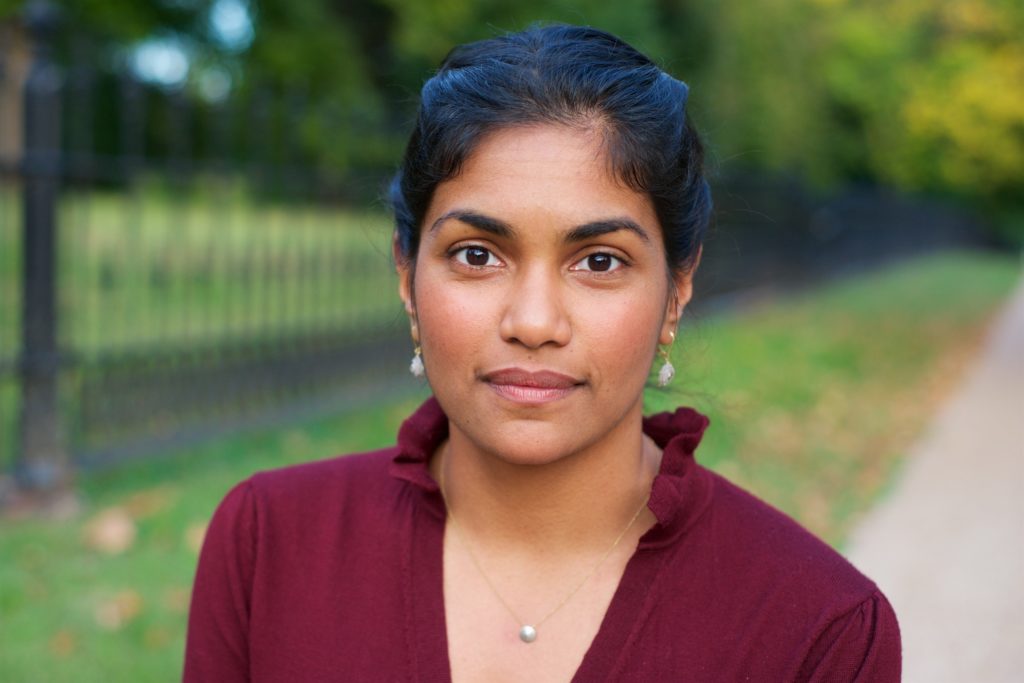
And as much as our innovations say that they want to change how they approach these problems, and do it in a more institutional, collaborative, policy-oriented way when it comes right down to it, what they mean is they, “Want you guys to do it for us.” We’ll have the meeting, we’ll sit at the table, we’ll outline what changing their work might look like, or what they might consider doing. And they’ll ultimately just go radio silent from there because at that point it will be bounced back to their field to figure out. “Okay, well, we want to know how we as Forward Through Ferguson can help, but you’re going to have to do some of the lifting now. We can help you do this, but give us your resources. Send me someone for you to train.” We probably should be reimbursed for doing this if we’re going to carve out time to train. But, “Name a person on your team is going to be responsible for your signature priority lens or making sure that you’re disaggregating your data by race and applying that Racial Equity lens. Put a name to it. Put resources down on the table and make this more than just a commitment in name only.”
I was a little skeptical when we did this MacArthur 100&Change grant. This is a good example to talk about in the aggregate because about 70 partners came forward. Of those, I thought, “Let’s see how many of them meaningfully contribute to this work.” There were definitely those who showed up and poked holes in our approach and what we were producing, which is also another very easy thing to do. So, where inertia will take you if you let it, is to raise your hand and say, “Yeah, I’m into this.” But then when it comes time to actually put in the energy and resources, many say, “Ehh, I’m gonna let others do the work.”
The other response we have seen is, “Let me tell you all the reasons why this isn’t going to work,” which is not solutions-oriented, which is a phrase I had not heard until I started working on the Commission, and it was novel to me. When you find a flaw in something, suggest a fix to the flaw. Super, simple idea, and one that I’m probably very guilty of not having adhered to in the past. Everyone can see the many reasons why something wouldn’t work. So of the 70, there was a core group that helped us write these implementation plans – including logic models, timelines, and budgets – to assemble the final application and will be beyond the application to build these next levels of detail needed to move implementation along.
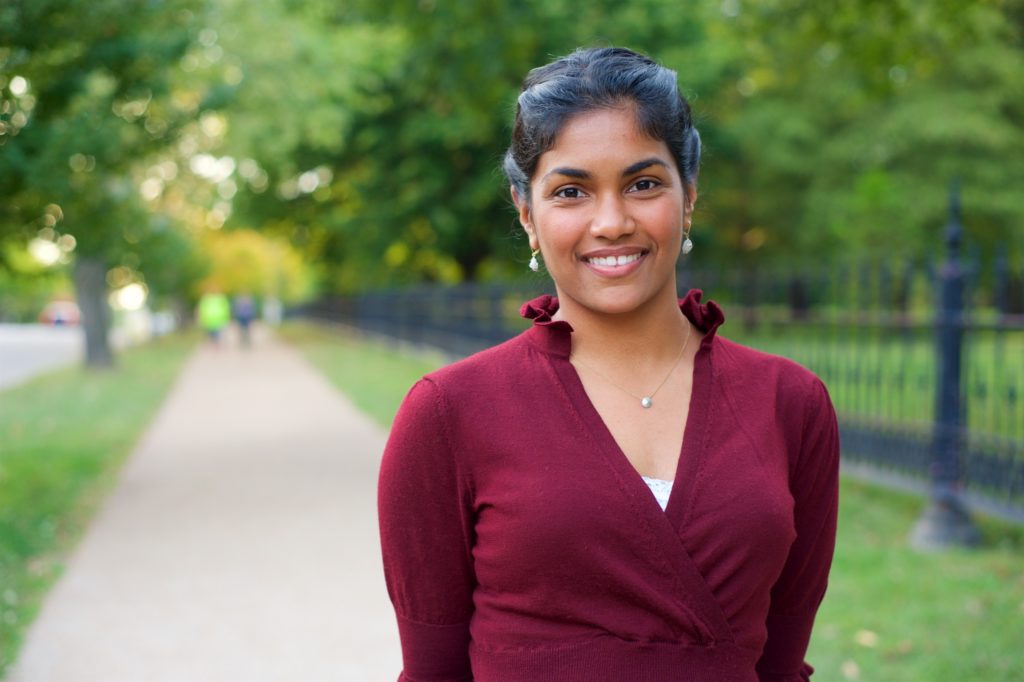
I’m proud of and gratified by the group of people, the smaller subset of the 70 who really just poured their time into those logic models. I created these template documents like, “Y’all are gonna create an implementation plan. You’re gonna put it into a logic model framework. Y’all might not have known what that is. I didn’t know what that was until I took a Programs, Implementation, and Evaluation class. But, you’re gonna put together a six-year budget for this and a timeline.” And I gave them blank copies of all those things like, “Here you go. By the way, we don’t have the bandwidth to provide you with any sort of support, but fill that out, and please do it in the next 10 days.” It was just amazing because they worked through the weekends, they met electronically and in person. People rolled up their sleeves, and I was so proud that not everyone said, “This is too hard to do.” Instead, they were like, “We’re gonna do this.”
The plain fact of the matter in this case is Black folks don’t live nearly as long as White folks. That is a shame, and that is unacceptable, and here’s why.
I’m also really proud of the data visualizations we produced from that, too, so that populations as a whole understand how to improve their health. And one of the biggest ways we do that is through communication. Communicating to the public, to policymakers, to systems, and institutions of leadership, and administration – that’s a bedrock of public health. Maybe we’ll put together a chart that shows predicted probabilities from our model that we’re generating in Applied Linear Modeling class in public health school. But, there is a lot between that and something that truly communicates to a non-public health, Ph.D., or masters level audience. An infographic would be great, but I don’t think most students are even trained in how to do that effectively.
So this has been an awesome opportunity to dip my toes in that and cool to see it come together with the data, design, and conceptualization. I had seen super impactful life expectancy visualizations before, for example. I wondered if we were really going to be able to do this in a new way that teaches us more and catches our attention even though we’ve heard this topic discussed, and to make it elegant, to make it simple, to make the message of it right there in your face, easy to read without getting too into the details. And we totally did it. The plain fact of the matter, in this case, is Black folks don’t live nearly as long as White folks. That is a shame, and that is unacceptable, and here’s why. Go see the report.
The fact that the report is this behemoth monolith – we did not give you an executive summary, we did not break it up into nice, bite-sized chunks for you – was intentional. We wanted to show that this isn’t simple. We’re not going to solve it by just working in one of these spaces. We needed to put it all out there, start at the ugly reality of what this is, and have conversations moving forward about, “How can we help?” And, “How do we parse this up a little bit to give people more access into the work?” is a valuable question worth asking.

I remember that there was an Economic Inequity and Opportunity workgroup and we had a woman who was in her 50’s or 60’s who worked at McDonald’s coming in to talk about how she likes working hard. She’s not asking someone to give her something she doesn’t feel like she’s working hard to earn, but, at that moment, she was not making ends meet. Where she was going to get the money to keep her electricity on and to feed her family was very much in question. She was, like, my parents’ age, which was really hard for me to see. I would never want to see my parents in that gut-wrenching situation where you’re working as hard as you possibly can and it’s not enough. I can still see her in front of all of us trying not to cry, and several of us in the room were trying not to, too.
At the end of the day, those types of experiences are so much more sustaining than just a love of the numbers, which is where I was before. So, this has allowed me to tap into something that I think will sustain my work for much longer than just this intellectual fascination with how model building and number crunching work. Not everyone has the opportunity to go where the opportunity points them at any given moment. It’s taken me a while to get here, and I’m not completely there yet. I guess this is what happens when you kind of let that happen.
-Karishma Furtado, Catalyst for Forward Through Ferguson

